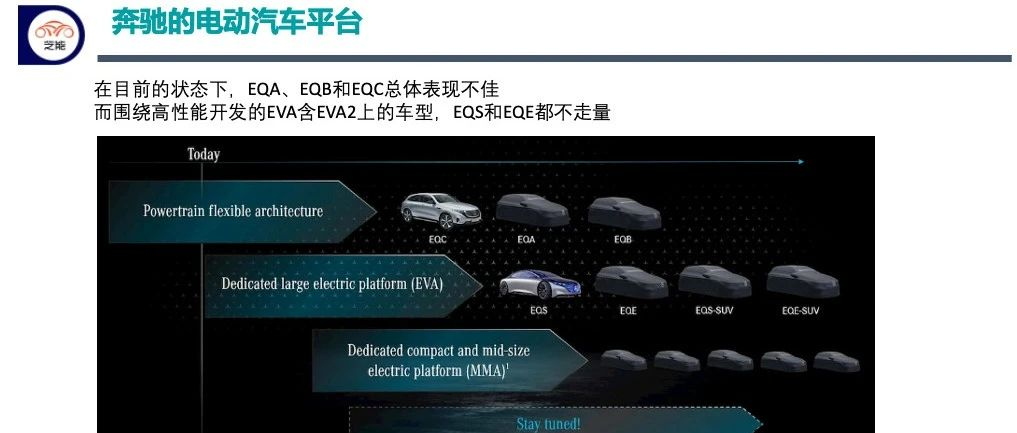Author: Tao Yanyan
Annual performance assessment of electric vehicle transformation of automotive companies. This is the third period. The first period covered the representative of radical transformation – Volkswagen Group; the second period covered BMW, which is repositioning its brand direction; and the next is the last of the German big three, Mercedes.
From an overall strategic perspective, Mercedes has invested heavily in electrification in recent years. Currently, it seems to have achieved certain results:
-
In 2022, the sales of new energy vehicles of the Mercedes and Smart brands reached 319,200, a year-on-year increase of 19%, and the penetration rate reached 15%.
-
The sales of pure electric vehicles plus vans reached 118,000 units, a year-on-year increase of 124.4%.
-
According to calculations, the sales volume of Mercedes’ plug-in hybrid vehicles was about 163,000 units.
In addition, according to our weekly tracking data, the sales of Smart pure electric vehicles are also gradually recovering during the platform switching process, and the performance in the Chinese market is also good.
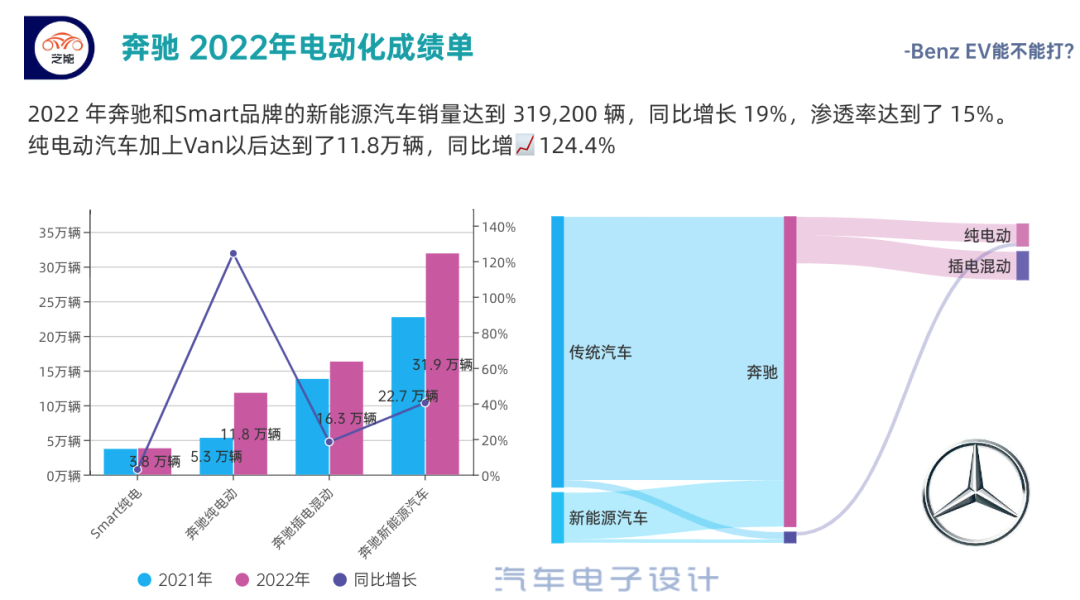
In terms of vehicle models, Mercedes’ nearly 120,000 pure electric vehicles can be broken down as follows:
-
EQA: 33,100
-
EQB: 24,200
-
EQE: 12,600
-
EQS: 19,200
-
Interestingly, the low-priced and high-priced models have almost the same sales figure (Figure 3).
From the perspective of regions, Germany is the largest market, followed by the UK and China (Figure 3).
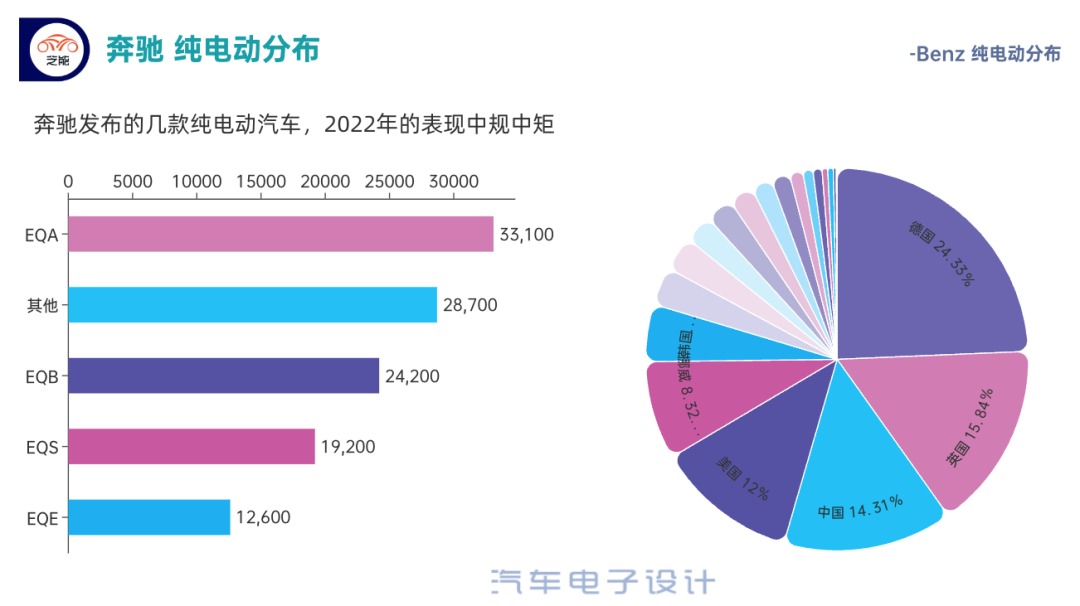 ## Performance of Mercedes-Benz Pure Electric Vehicles Market
## Performance of Mercedes-Benz Pure Electric Vehicles Market
Globally
Mercedes-Benz’s pure electric vehicles increased from 53,000 in 2021 to 118,000 in 2022, with a growth rate of 124.4%. At first glance, it is a good result. But if we compare the sales of pure electric vehicles of BMW, Benz, Audi, and NIO, we can get a preliminary idea.
If we only focus on luxury brands like BBA and NIO, Mercedes-Benz’s pure electric vehicles, including Van, are comparable to Audi and have slightly lower sales than NIO, but they still have some distance from BMW’s 172,000. It is impossible to compare with Tesla, such as 1.31 million vehicles with a year-on-year growth rate of 40%.
Note: Here we also compare Porsche: the current sales are just over 30,000 units. After the Macan EV is launched, we will add Porsche’s sales data to the sales comparison chart.
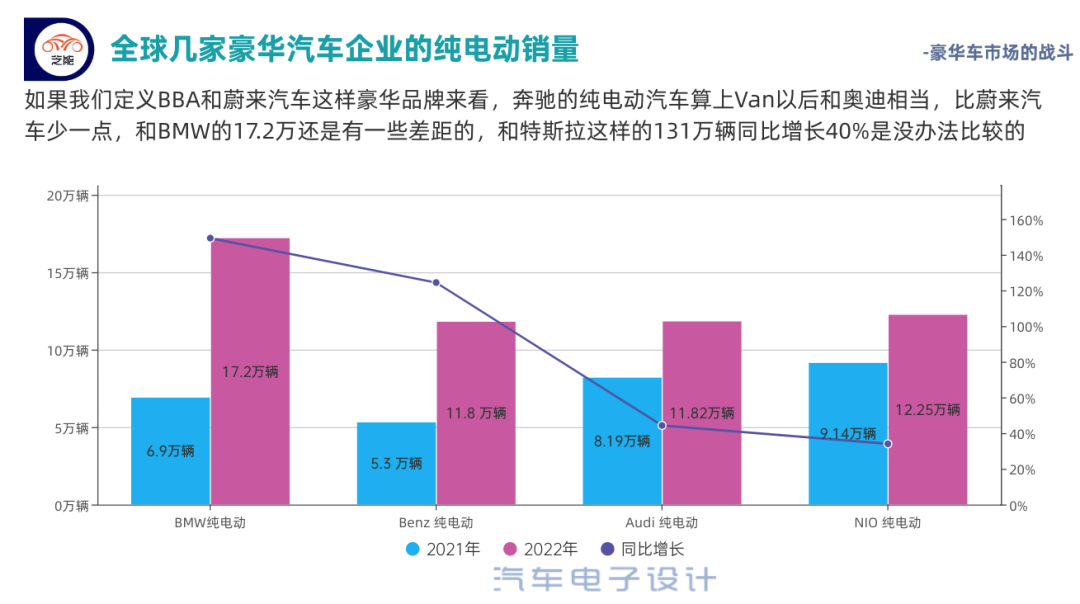
In China
Mercedes-Benz did not adopt a particularly aggressive pricing strategy in China, but the price is mid-range, which led to lukewarm sales. The total sales of several pure electric vehicles are 12,300 units, of which EQB is the highest at about 4,000 units. This sales data is not considered successful for the pure electric product under the Mercedes-Benz brand.
-
EQA: 3,422 units
-
EQB: 4,062 units
-
EQC: 3,200 units
-
EQE: 1,632 units
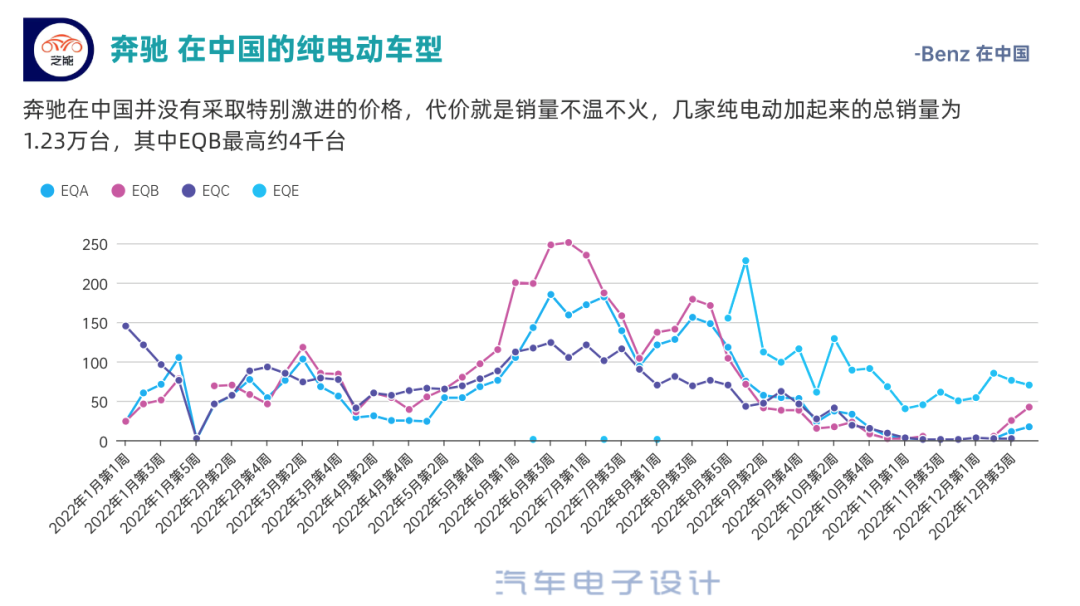
The fact is that Mercedes-Benz’s problem lies in the balance between the design and quality of electric vehicles. We have analyzed that the EQC electric vehicle of Mercedes-Benz has a recall of 10,104 vehicles. In the electric drive system, due to the aggressive cooling system of the motor, insufficient sealing has caused coolant leakage, which has had a negative impact on the reputation of Mercedes-Benz in the field of electric vehicles.In the current state, EQA, EQB, and EQC are performing poorly overall, while models based on the high-performance development of EVA (including EVA2), EQS, and EQE, are not selling well. In order for Mercedes-Benz to succeed, it needs to wait for the release of the MMA electric vehicle architecture, which is aimed at a wider consumer base.
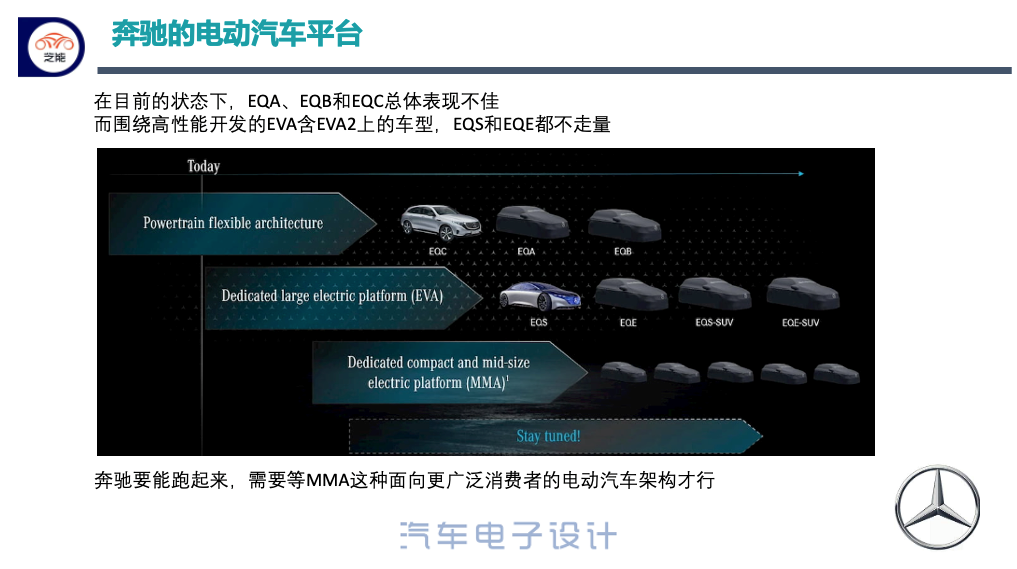
Mercedes-Benz’s Next Steps
In addition to MMA, Mercedes-Benz will also launch its own products on high-performance sports car and VAN platforms, which is in line with its strategy of becoming smaller and more refined. Mercedes-Benz’s main focus will be on differentiating its commercial and high-performance cars. It is not yet known how much volume the MMA architecture will be able to achieve.
-
In the field of gasoline-powered vehicles, Mercedes-Benz is narrowing the range of entry-level models and making full use of the overall price trajectory of gasoline-powered cars. The goal is to improve profitability based on a luxury strategy.
-
In the field of electric vehicles, it is still a complete concept with high-end, commercial, and mid-range models. However, Mercedes-Benz will not compete based on price and will rather have a smaller market share, rather than engage in price wars.
Therefore, from an orientation perspective, BMW’s price reduction strategy at the end of 2022 is not completely necessary for Mercedes-Benz, as the two companies have different approaches. BMW’s brand core – sportiness and handling – are heavily influenced by electrification, but in the luxury field, Mercedes-Benz and Porsche do not seem to be affected much. It is clear that Mercedes-Benz is moving toward Porsche.
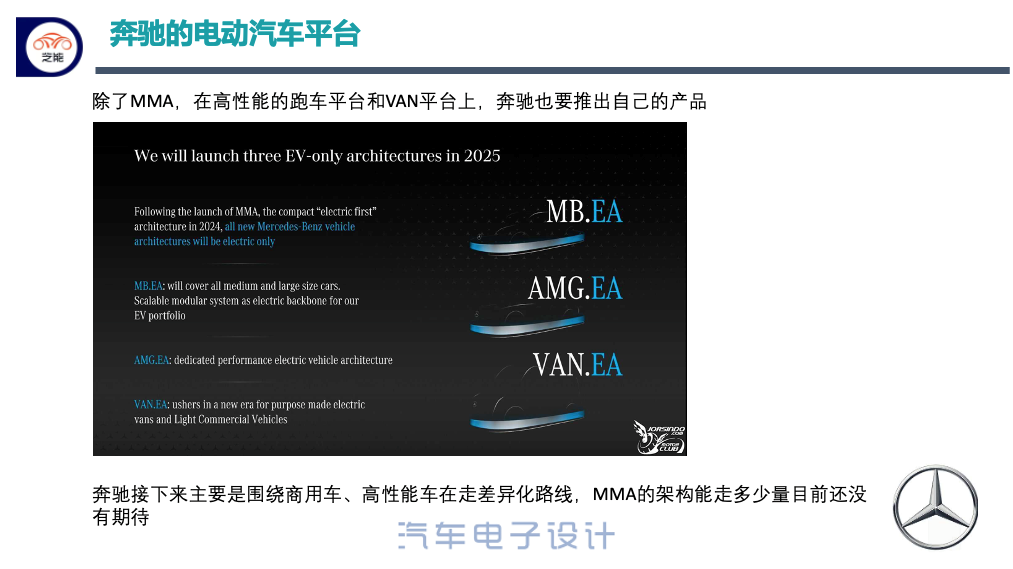
In the area of technology, Mercedes-Benz seems to be betting on the next generation of batteries – this continuous investment also shows its attitude. Currently, both BMW and Mercedes-Benz do not directly produce batteries; both have reservations.
Conclusion: The German Big Three have always been steady players in the automotive industry. In the next 3-5 years, how luxury cars will evolve is worth paying attention to. Whether it is NIO in the pure electric field or Ideal in the extended range field, they have put pressure on luxury brands in terms of pricing. The future direction of these high-end brands under state-owned enterprises is also worth our attention in the luxury electric vehicle market.# 中文标题
这是一段中文段落,其中包含 粗体 和 斜体 文字。
下面是一张图片:

有序列表:
- 第一项
- 第二项
- 第三项
无序列表:
- 项目一
- 项目二
- 项目三
代码块:
print("这是一段 Python 代码")
网址链接:
这是一个链接到 百度 的网址。
以上是示例 Markdown 文本。
This article is a translation by ChatGPT of a Chinese report from 42HOW. If you have any questions about it, please email bd@42how.com.
